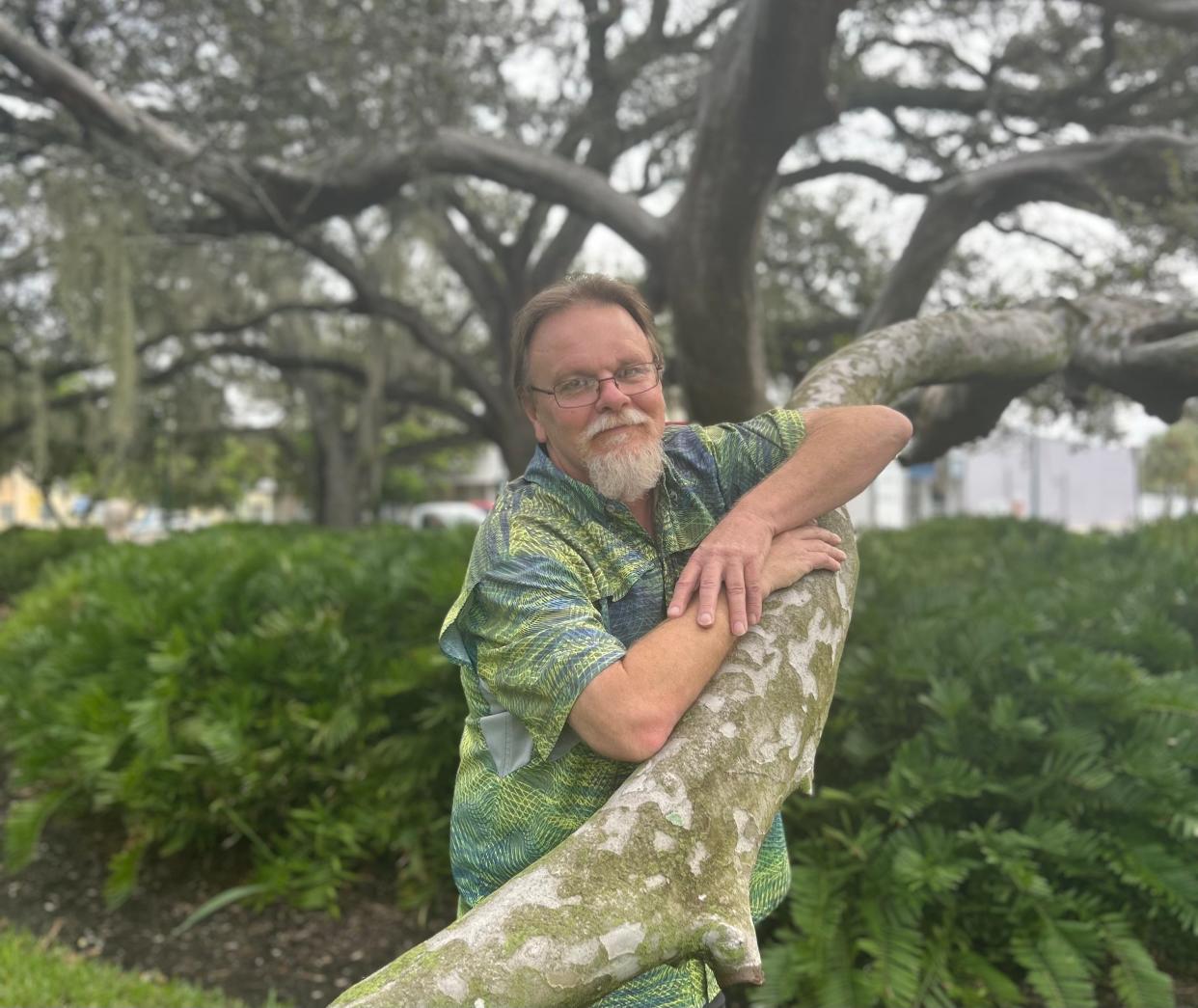For Sarasota's senior arborist, protecting trees also preserves quality of life

While many Sarasota residents have long been protective of the city’s tree canopy, the main man behind the mission is 55-year-old Donald Ullom.
Ullom has been protecting trees for more than 20 years and has served as the city’s senior arborist for nearly eight, advising on all things, well, arboreal. He is certified by the International Society of Arboriculture.
Building on a career that began in the Sequoia National Forest in California, Ullom now focuses on ordinance compliance, reviewing permits and building plans for private property to make sure the city’s urban canopy is preserved, which often means replacing trees as they are cut down.
Occasionally Ullom even gets to plant a few himself.
“I actually have to sit down and look at the building plans for the site, whether you’re putting in a garage, house, hotel, shed, pool … we have to look at all that and see how it's going to affect existing trees,” Ullom said.
Maintaining the local canopy helps prevent negative environmental impacts such as the urban heat island effect, which can drive up temperatures in areas like city centers that were allowed to develop with little regard for trees and their cooling abilities.
Ullom also noted that part of the job is community outreach, helping people with the permitting process and resolving tree-related issues.
“I try to get out and about as much as possible. But you’re looking at new houses, demolitions, tree removals, new buildings, such as the new hospital complex or hotels that are coming in downtown,” said Ullom, who makes $78,684 a year. “So, you have to get on those sites and actually see what’s there, what needs replaced and what options we have as far as preserving trees or requiring for new trees.”
Sarasota hired an arborist and incorporated tree ordinances into the city’s books in 2002, four years after community members gathered to fight back against development and protect the local canopy.
The city most recently updated its tree protections in June 2022, adopting Ordinance No. 21-5369 after years of residents and developers arguing over the proposed regulations.
Sarasota tree ordinance
The new ordinance brought changes to the list of undesirable tree species as well as those considered “grand trees.” Those listed as undesirable trees do not have to be replaced if removed, but grand trees – trees determined to have a good or moderate sustainability rating by a city arborist – are protected and removal is prohibited unless an exemption is made.
Another change now requires large canopy trees to be replaced by trees 3 inches in diameter at chest height as opposed to the previous 5- or 7-inch requirements. Ullom said this is because replacement trees with a 3-inch diameter are easier to find and seem to produce better growth results.
“We were losing a lot of trees we really needed to save and didn’t have a mechanism to do it, especially with our grand trees,” Ullom said. “We’ve seen better establishment of the new mitigation trees, and we’ve also seen the removal of a lot more invasive or non-desirable species which has promoted better wildlife in the area.”
Ullom says the overall impact of the new ordinance has been good, and that without these protections in place, the city landscape could be much different.
“I think we would have a lot more stormwater runoff. We would have hotter temperatures and probably more pollutants in the downtown area, just to start,” he said. “Our greenscape would be pretty much null and void downtown in a lot of ways, except for city parks. And our neighborhoods would not be retaining that quality that makes them what they are.”
Ullom notes that all trees within the city require a permit for removal, including dead trees and palm trees. The only exception are citrus trees, although he clarified that mango trees are not citrus, as they are actually part of the poison ivy family.
The city also offers a Mature Tree Program twice a year as an incentive to encourage homeowners to plant more canopy trees. More information on the program, tree removal permits and the city’s tree ordinances can be found at sarasotafl.gov/government/development-services/tree-protection.
Sarah Owens is a reporter for the Community News Collaborative. Connect with her at slowens@cncfl.org.
This article originally appeared on Sarasota Herald-Tribune: Above everything, Sarasota's city arborist speaks for the trees

